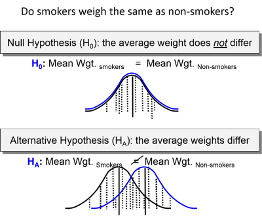A hypothesis is a statement that predicts the relationship between two or more variables. It is a crucial step in the scientific process, as it sets the direction for further investigation and helps researchers to determine whether their assumptions and predictions are supported by evidence. In this blog post, we will discuss the steps involved in developing a hypothesis and provide tips for making your hypothesis as effective as possible.

Step 1: Identify a Research Problem
The first step in developing a hypothesis is to identify a research problem. This can be done by reviewing the literature in your field, consulting with experts, or simply observing a phenomenon that you find interesting. Once you have identified a problem, you should clearly define the question you want to answer and determine the variables that may be relevant to the problem.
Step 2: Conduct a Literature Review
Once you have defined your research problem, the next step is to conduct a literature review. This will help you to understand what is already known about the topic, identify gaps in the literature, and determine what has been done and what still needs to be done. During this step, you should also identify any potential biases, limitations, or gaps in the existing research, as this will help you to refine your hypothesis and avoid making the same mistakes as previous researchers.
Step 3: Formulate a Hypothesis
With a clear understanding of the research problem and existing literature, you can now formulate a hypothesis. A well-written hypothesis should be clear, concise, and specific, and should specify the variables that you expect to be related. For example, if you are studying the relationship between exercise and weight loss, your hypothesis might be: “Regular exercise will lead to significant weight loss.”
- The null hypothesis and the alternative hypothesis are two types of hypotheses that are used in statistical testing.
The null hypothesis (H0) is a statement that predicts that there is no significant relationship between the variables being studied. In other words, the null hypothesis assumes that any observed relationship between the variables is due to chance or random error. The null hypothesis is the default position and is assumed to be true unless evidence is found to reject it.
- The alternative hypothesis (H1), on the other hand, is a statement that predicts that there is a significant relationship between the variables being studied. The alternative hypothesis is what the researcher is trying to prove, and is the opposite of the null hypothesis. In statistical testing, the goal is to determine whether there is sufficient evidence to reject the null hypothesis in favor of the alternative hypothesis.
When conducting statistical tests, researchers typically set a significance level, which is the probability of rejecting the null hypothesis when it is actually true. The most commonly used significance level is 0.05, which means that there is a 5% chance of rejecting the null hypothesis when it is actually true.
It is important to note that the null hypothesis and alternative hypothesis should be complementary and exhaustive, meaning that they should cover all possible outcomes of the study and that only one of the hypotheses can be true. The results of the statistical test will either support the null hypothesis or provide evidence to reject it in favor of the alternative hypothesis.
Step 4: Refine and Test Your Hypothesis
Once you have formulated a hypothesis, you should refine it based on your literature review and any additional information you have gathered. This may involve making changes to the variables you are studying, adjusting the methods you will use to test your hypothesis, or modifying your hypothesis to better reflect your research question.
Once your hypothesis is refined, you can then test it using a variety of methods, such as surveys, experiments, or observational studies. The results of your study should provide evidence to support or reject your hypothesis, and will inform the next steps in your research process.
Tips for Developing Effective Hypotheses:
- Be Specific: Your hypothesis should clearly state the relationship between the variables you are studying, and should avoid using vague or imprecise language.
- Be Realistic: Your hypothesis should be based on existing knowledge and should be feasible to test.
- Avoid Confirmation Bias: Be open to the possibility that your hypothesis may be wrong, and avoid assuming that your results will support your hypothesis before you have collected and analyzed the data.
- Consider Alternative Hypotheses: Be sure to consider alternative explanations for the relationship between the variables you are studying, and be prepared to revise your hypothesis if your results suggest a different relationship.
Developing a hypothesis is a critical step in the scientific process and is essential for conducting rigorous and reliable research. By following the steps outlined above, and by keeping these tips in mind, you can develop an effective and well-supported hypothesis that will guide your research and lead to new insights and discoveries
